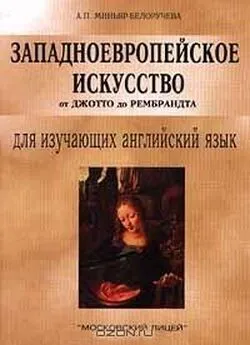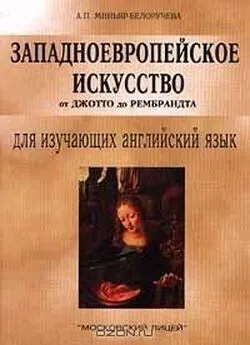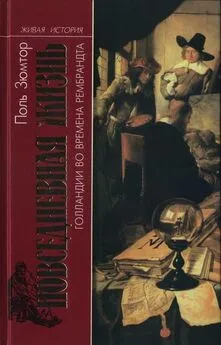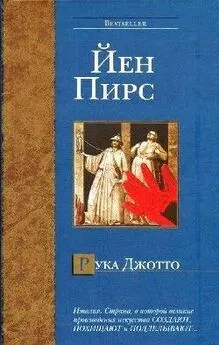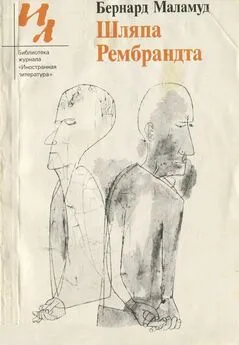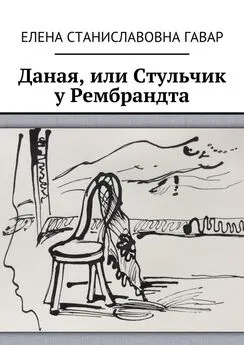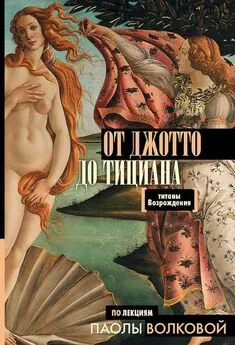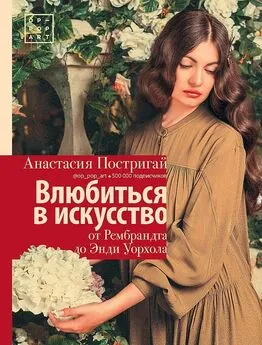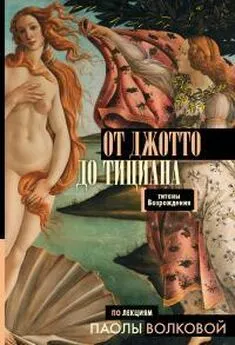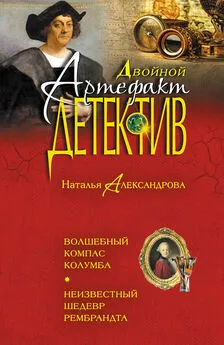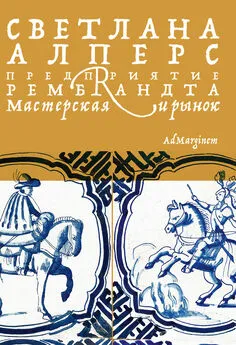ЗападноеврЗападноевропейское искусство от Джотто до Рембрандта
- Название:ЗападноеврЗападноевропейское искусство от Джотто до Рембрандта
- Автор:
- Жанр:
- Издательство:неизвестно
- Год:неизвестен
- ISBN:нет данных
- Рейтинг:
- Избранное:Добавить в избранное
-
Отзывы:
-
Ваша оценка:
ЗападноеврЗападноевропейское искусство от Джотто до Рембрандта краткое содержание
«Московский Лицей»
пособие для изучающих английский язык
издание второе переработанное и дополненное
Москва -1999
Рецензенты:
И. И. Малинина кандидат филологических наук
Н. В. Васютина кандидат филологических наук
РЕКОМЕНДОВАНО кафедрой иностранных языков исторического факультета МГУ им. М. В. Ломоносова
Тексты настоящего пособия охватывают пять веков западноевропейской живописи от Джотто до Рембрандта. Это дает возможность обучаемым приобрести не только лингвистические знания, усвоив обширный лексический материал, но и культурологические, поскольку последовательный хронологический переход текстов от одного художника к другому позволяет создать более или менее целостную картину развития западноевропейской искусства с XIII по XVII вв. Система упражнений направлена на усвоение лексического материала и развитие навыков устной речи.
Данная книга является первой частью цикла учебных пособий для изучающих английский язык и предназначена для студентов-искусствоведов, учащихся классических гимназий, лицеистов и всех интересующихся искусством.
© Миньяр-Белоручева А. П.
© Оформление «Московский Лицей», 1999
ISBN 5-7611-0181-5
Издательство «Московский Лицей» Адрес: Москва, Ярославское ш., д.2, корп. 1
Телефон: (095) 188-59-71
Факс: (095) 188-33-10
Печ. л. 8,0. Тираж 5000 экз.
ЗападноеврЗападноевропейское искусство от Джотто до Рембрандта - читать онлайн бесплатно полную версию (весь текст целиком)
Интервал:
Закладка:
6. What is represented in the Expulsion from Eden ? How did Masaccio picture man's separation from God?
III. I. Give Russian equivalents of the following phrases:
Gothic pointed arches; light and shade; a central panel of an altarpiece; the grandeur of sculpture; the Passion; to take the observer a few yards back in the picture; in the principle scene; a sense of actual masses existing in actual space; the subject recounts; sculpted group; a tax-gatherer; to cast for the fish; to perform a miracle; on the entrance wall to the chapel; the impact of light on an object; to float above: payoff; to render the event; a simple maxim; in a paroxysm of guilt and grief; to cover the face with the hands; to lift up the face; to paint with breadth and ease.
II. Give English equivalents of the following phrases:
изобразительное искусство; центральная часть алтарного образа; влияние света на предмет; величие скульптуры; над входом в капеллу; сюжет повествует; сотворить чудо; скульптурная группа; готические стрельчатые арки; ощущение естественности среды, в которой пребывают герои; парить над; сотрясаться от рыданий; принципы пространства и светотени; оплата; передать событие; бросить невод; писать размашисто и легко; закрыть лицо руками; мытарь; в приступе вины и горя; простая истина; провести зрителя на несколько метров вглубь картины.
III. Make up sentences of your own with the given phrases.
IV. Translate the following groups of words into Russian:
create – creator – creative – creativity – creature; found – founder – foundation; sculpture – sculptor – sculptural – sculptured; revolution – revolutionary – revolutionise – revolutionist; image -imaginary – imagination – imaginative; real – reality – realism – realistic; sacrifice – sacrificial.
V. Arrange the following in the pairs of synonyms:
a) immediately; to recount; short-lived; impact; power; to connect; to perform; desolate; central; monumental; to cast; basic;
b) principal; influence; massive; to tell; at once; to link; to do;
authority; brief; barren; fundamental; to throw.
VI. Arrange the following in the pairs of antonyms:
a) central; large; giant; short-lived; separate; create;
b) dwarf; peripheral; little, small; unite; break; long-lived.
IV. Here are descriptions of some of Masaccio 's works of art. Match them up to the given titles…
1. The painting depicts archaic, unsmiling sculpted images.
2. The artist has arranged the Apostle figures around Christ.
3. The man's separation from God is shown as a tragedy.
a. Tribute Money
b. Expulsion from Eden
c. Madonna and Child Enthroned
V. Translate the text into English.
Мазаччо, выдающийся флорентийский художник, решил проблемы живописи, поставленные Джотто. В главных сценах росписи в капелле Бранкаччи – «Чудо со статиром» и «Изгнание из Рая» Мазаччо показал как помещать фигуры в пространстве. В «Изгнании из Рая» мощное тело Адама сотрясается от рыданий, в приступе вины и горя он от стыда закрыл лицо руками; Ева рыдает, запрокинув в отчаянии голову. В сцене «Чудо со статиром» Мазаччо объединил три сюжета: Христос с учениками у ворот, которых остановил сборщик налогов, – центральная композиция; Петр, по велению Христа забросивший невод, – композиция слева; сцена выплаты подати – справа. Сцены, соединенные на одной плоскости, написаны с учетом линейной и воздушной перспективы (linear perspective and aerial perspective). В отличие от Джотто, который уводит взгляд зрителя только на несколько шагов вглубь картины, Мазаччо образует глубинное пространство, проводя взгляд зрителя над берегами Моря Галилейского, полузасохшими деревьями, к хребту далеких гор, и, наконец, к небу. Благодаря фрескам Мазаччо церковь Санта Мария дель Кармине превратилась в своеобразную академию, где учились многие художники.
VI. Summarize the text.
VII. Topics for discussion.
1. Masaccio's artistic heritage.
2. Masaccio's impact on art development.
Unit III Mantegna (1431-1506)
Andrea Mantegna was the first major north Italian artist to experience the full force of the Florentine Renaissance. In 1454, the year of Donatello's departure from Padua, Mantegna began, with several older artists, a series of frescoes in the Chapel of the Overati family in Padua. He finished the frescoes himself in 1457 when he was twenty six years old.
The air-raid on March 11, 1944 completely destroyed the chapel containing Mantegna's early works. Only two of the frescoed panels on the lower part of the right wall were saved the Martyrdom and the Burial of St. Christopher , and the Assumption in the apse. Almost all the colour is gone from the two frescoes the Martyrdom and the Burial of St. Christopher , but one can still detect the novelty of the background perspective. In the middle of the cove of the apse, the Virgin Mary disappears behind a high archway lifted up towards the sky in all her physical presence. We follow her as she rises slowly along with the Apostles who stand below against the sides of the arch. The upturned face seen from below with the eyes raised is extremely beautiful.
The few small fragments of the Martyrdom of St. James (1454-56) collected from the pile of ruins and put together in a photomontage have been placed on the left wall. The photo-montage of the Martyrdom of St. James demonstrates the high level of perfection achieved by the young Mantegna in rendering the three-dimensional illusion.
Saint James Led to Execution is a triumph of Renaissance spatial construction and Renaissance Classicism. The perspective is calculated for the eye level of a person of average height standing on the floor below. The effect of figures moving in an actual space is startling. The ground disappears and the figures recede. Within Mantegna's carefully constructed space, the figures look like animated statues, carved rather than painted. But their marmoreal hardness only intensifies the drama. James on the way to martyrdom, turns to bless a kneeling Christian who has broken through the Roman guards. The movements of the figures, the gentleness of the saint, and the emotion of the moment are as severely controlled as the perspective.
In 1474 Mantegna finished the frescoes for the castle of the Gonzaga family, marquises of the principality of Mantua. The Gonzaga frescoes are continuous around two sides and over the vaulted ceiling of a square chamber. They present scenes from contemporary court life. The frescoes have been painted in such a way that the fireplace and other architectural elements of the room are incorporated into the composition. The scene with the family surrounding the ruler and his wife, which is painted over the fireplace, appears to have the figures actually standing and seated upon the mantelpiece, and the leather curtains which were part of the original hangings of the room are echoed in the painted curtains that close off some scenes. In one fresco Francisco Gonzaga is greeted by his father, the marquis, and by the bishop of Mantua, other dignitaries and some charming children on his return from Rome, where he had been made a cardinal. The background is not Mantua, but an ideal Italian city on a hill, the circular walls are seen in perspective. Outside them can be seen Roman ruins and statues. The colouring was undoubtedly more brilliant before certain portions peeled off in the course of time.
The centre of the ceiling is Mantegna's most astonishing perspective prank. We seem to be looking up into a circular parapet as up through the mouth of a well, above which are sky and clouds. Winged children clinging to the parapet are seen in sharp perspective from front and rear, and across one end runs a pole, which if it rolled a bit, would allow a large tub of plants to fall on our heads. Ladies-in-waiting, including one black servant, peer over the edge, smiling at our discomfiture. With this odd beginning commences the long series of illusionistic ceiling and dome paintings that continued for three centuries and spread from Italy throughout Europe.
In the long bas-relief-like painting the Introduction of the Cult of Cybele into Rome Mantegna reveals his sculptural tendencies and grave attitude to classical antiquity. His figures take on the rigidity of stone. The Madonna and Child with Magdalen and S. John the Baptist Mantegna painted with a simulated marble framing. As through a window the observer meant to look at these statue-like figures whose draperies fall into heavy folds.
Late in life Mantegna painted the Dead Christ on canvas and in scurto (extreme foreshortening), intended not as a trick in this case but as a device to bring home to the observer the personal meaning for him of Christ's sacrificial death. The weeping Mary and John are likely later additions.
Mantegna was a printmaker. Seven engravings by his hand and many by his followers established a graphic art tradition in the late fifteenth century in northern Italy.
Make sure you know how to pronounce the following words:
Mantegna; Mantua; marquis, burial; martyrdom; montage; castle; Cybele
Saint James Led to Execution – «Шествие Святого Иакова на казнь»
Martyrdom of St James – «Мученичество Святого Иакова»
Burial of St. Christopher – Перемещение тела Святого Христофора»
Assumption – «Вознесение Марии»
Dead Christ – «Мертвый Христос»
Introduction of the Cult ofCybele into Rome – «Учреждение культа Кибелы в Риме»
Madonna and Child with Magdalen and S. John the Baptist – «Мадонна с Младенцем, Магдалиной и Святым Иоанном Крестителем»
Crucifixion – «Распятие»
I. Read the text. Mark the following statements true or false.
1. In 1454 Mantegna alone began a series of frescoes.
2. In 1944 all Mantegna's frescoes were destroyed.
3. Mantegna initiated illusionistic ceiling paintings.
4. A simulated marble framing is Masaccio's innovation.
Читать дальшеИнтервал:
Закладка:
